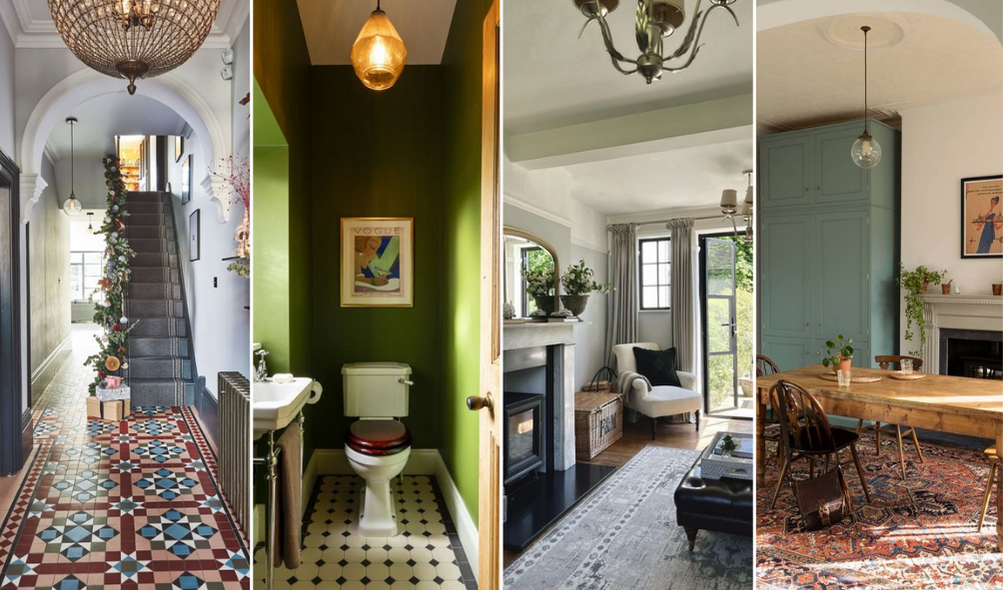
FAQ About Edwardian House Decor

Were there any notable trends in Edwardian bedroom furniture?
Lighter Wood Finishes: Edwardian bedroom furniture often featured lighter wood finishes compared to the dark and heavy woods popular in the Victorian era. Oak, satinwood, and mahogany with lighter stains were common choices. The lighter finishes contributed to a brighter and airier feel in bedrooms.
Inlay and Marquetry: Inlay and marquetry techniques gained popularity during the Edwardian era. Furniture pieces were adorned with delicate inlay work, which involved the use of contrasting wood veneers to create intricate patterns. This added a touch of craftsmanship and decorative elegance to bedroom furniture.
Serpentine and S-Curve Designs: Furniture during the Edwardian era often featured serpentine and S-curve designs. Bed frames, dressers, and wardrobes might have gently curved lines, creating a sense of fluidity and grace. These curves were less pronounced than in previous eras, contributing to a more subtle aesthetic.
Low Footboards: Bed frames in Edwardian bedrooms often had lower footboards compared to the taller and more massive footboards of the Victorian period. This design choice contributed to a lighter and less imposing look for the beds.
Upholstered Headboards: Upholstered headboards became popular in Edwardian bedrooms. These headboards were often padded and covered with fabric, providing a comfortable and luxurious element to the bed. Upholstery materials ranged from simple fabrics to more elaborate patterns.
Metal Beds: Iron and brass bedsteads continued to be popular during the Edwardian era. These metal beds often featured intricate designs, such as scrolling patterns or Art Nouveau-inspired motifs. The use of metal contributed to a lighter and more open feel in bedrooms.
Fitted Wardrobes: Edwardian bedrooms saw the rise of fitted wardrobes with built-in storage solutions. These wardrobes were designed to be more integrated into the room, providing efficient storage space for clothing and accessories. Mirrored doors were a common feature.
Dressing Tables with Swivel Mirrors: Dressing tables were a staple in Edwardian bedrooms, and they often featured swivel mirrors. The mirrors were adjustable, allowing for optimal angles during grooming. The tables were typically accompanied by matching or coordinating stools.
Mahogany and Satinwood Accents: While lighter woods were popular for the main furniture pieces, mahogany and satinwood were often used as accent woods for details such as inlays, veneers, or decorative elements. These darker woods provided a contrast and added richness to the overall design.
Simple and Elegant Designs: Overall, the design ethos of Edwardian bedroom furniture was characterized by simplicity and elegance. Ornate carvings and heavy embellishments were replaced with more streamlined and refined forms. Furniture designs focused on creating a sense of comfort and sophistication.
Occasional Chairs: Bedrooms during the Edwardian era often featured occasional chairs or bedroom seating. These chairs were designed with comfort in mind and were often upholstered in coordinating fabrics with the overall bedroom decor.
Bowed and Tapered Legs: Furniture legs in Edwardian bedrooms commonly featured gentle bows or curves. Tapered legs, whether on bed frames, dressing tables, or chairs, added a sense of lightness and visual interest.
